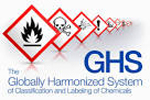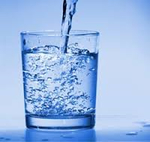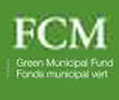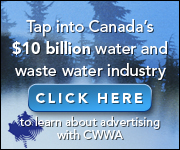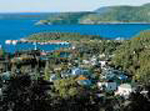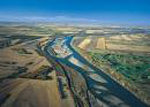| August 28, 2014
|
In This Issue |
|
CWWA News
|
|
|
Member News
|
|
|
Federal Initiatives
|
|
|
National News
|
|
|
Provincial News
|
|
|
Upcoming Events
|
|
|
Snippings and Clippings
|
|
Please excuse the cussing, but I am sure many of you share this same frustration. Certainly the criminal actions of the brothers in Walkerton hurt all of our reputation a little, but, overwhelmingly, Canadians enjoy some of the safest water in the world. We’ll all see evidence of this at our National Drinking Water Conference this October 26-29 here in the National Capital Region. We in the industry know that our water is safe, and we wouldn’t sleep if we thought otherwise, but it seems like an endless argument to convince the general public sometimes.
|
The 16th Canadian National Conference on Drinking Water is the national conference of the Federal-Provincial-Territorial Committee on Drinking Water, and that group is an integral part of planning and setting the program. The event attracts water researchers, regulators and utilities across the country.
CWWA is pleased to announce that registration for the 2014 Window on Ottawa is now available.
The Water Environment Federation (WEF) proudly announces twelve distinguished members as the 2014 WEF Fellows recipients. This prestigious designation recognizes members’ achievements, stature, and contributions in the water profession.
|
Proposed Hazardous Products Regulations (HPR), pursuant to the Hazardous Products Act, were published in the August 9, 2014 edition of Canada Gazette Part I. The new regulations will implement the Globally Harmonized System for the Classification and Labelling of Chemicals (GHS) hazard classification criteria and hazard communication elements — labels and safety data sheets (SDSs) — as per the fifth revision of the GHS published by the United Nations in 2013. CWWA has been following the development of this initiative for some time. While the impacts are minimal for our members, they do have many substances which will require updated data sheets and may require some training around the new classification system.
|
Health Canada, has released a new proposed guideline technical document for tetrachloroethylene in drinking water. The 2014 document proposes a new maximum acceptable concentration of 0.01 mg/L for tetrachloroethylene, down from the current value of 0.03 mg/L. The lower guideline is a result of reviewing new and ongoing research and based on approaches and techniques that were not available in 1995 when the existing guideline was established. CWWA’s Drinking Water Quality Committee is currently reviewing the guideline and will submit comments if there are any concerns with the document.
|
FLOW Canada – the Forum for Leadership on Water (FLOW) an independent group of water experts from across Canada that encourages government action to protect our critical freshwater resources has released a new research report The Blue Paper: Water Co-Governance in Canada The
|
Is your municipality considering a water study or test? You may be eligible for a grant from FCM’s Green Municipal Fund.
|
There is a need for field construction professionals, engineers, technicians, CCTV installers & operators, and municipal & public works administrators to be trained on how to administer maintenance inspection programs and improve sewer system performance levels.
|
Last month, the Environmental Commissioner of Ontario, Gord Miller tabled Looking For Leadership - The Costs of Climate Inaction: Annual Greenhouse Gas Progress Report 2014. The report discusses Ontario’s greenhouse gas (GHG) inventory; provides a review of Ontario’s progress on GHG reduction; and addresses adapting infrastructure to extreme weather events.
|
Quebec’s Minister of Sustainable Development, the Environment and the Fight against Climate Change, David Heurtel, announced July 23, 2014, the adoption of the Regulation respecting water withdrawals and water protection (RPEP), pursuant to the Environment Quality Act.
|
Alberta released July 23, 2014, South Saskatchewan Regional Plan (SSRP). The plan protects critical watersheds and habitats and creates: eight new or expanded conservation areas; two new and six expanded provincial parks; and 12 new primitive recreation areas for camping and trail access. Environmental management frameworks will set strict environmental limits to ensure air and water quality while maintaining biodiversity. The plan, which takes effect on September 1, 2014, covers 83,764 square kilometres from the US border to Crossfield, AB. Nearly half of Alberta’s total population live within its borders.
|
The City of Calgary, through the Calgary Emergency Management Agency, requested an independent review of its performance during the 2013 Southern Alberta floods. The Conference Board of Canada has recently published the results of that review, as well as best practices and recommendations.
|
The BC Ministry of Environment introduced an administrative penalty program to encourage compliance with the Environmental Management Act (the "EMA") and the Integrated Pest Management Act (the "IPMA"). The Administrative Penalties Regulation was designed to bridge the gap between warnings and violation tickets for minor offences and criminal prosecutions for more serious offences.
|
SAVE THE DATE: October 8th, 2014. Codes Mill, Perth ON The intent of this symposium is to inform and provide the opportunity for discussion on the decentralized approach to municipal water servicing. The 1 day event will feature expert speakers, case studies and a panel discussion to cover the hurdles and opportunities for decentralized solutions to provide cost effective growth to Ontario’s small municipalities. Topics will cover Small town hurdles to cost effective growth, PPS and Official Plan implications, Moe, D5 guideline/ MTA’s for new management and case studies. A site tour of the new Perth Geotube Onsite Dewatering Project will be offered.
|
Water Canada Five New Brunswick communities will receive funding to upgrade their water and wastewater systems, according to an Aug. 14 announcement from the province.
|
Water Canada The construction of a $10-million wastewater treatment plant in the Town of Windsor, Nova Scotia will be funded by the municipal, provincial, and federal governments. Officials from the three levels of government made the announcement on Aug. 14.
|
Water Online The EPA has identified 12 water technology clusters throughout the U.S. These areas consist of businesses, education and research institutions, and other organizations focused on the future of water innovation.
|
Water Canada On July 29, the Canadian Water Network announced an investment of more than $165,000 toward helping communities develop an integrated risk management framework for municipal water systems.
|
Water Canada The Government of Canada is investing in several New Brunswick wastewater infrastructure upgrades through the federal Gas Tax Fund
|
Hazmatmag Both the Yukon and Northwest Territories governments are busy crafting regulations for fracking in Canada’s North. The regulations will follow the NWT’s Oil and Gas Operations Act, which came into force on April 1, 2014 at devolution.
|
Edmonton Journal The cost of controlling the mussels in the Great Lakes, where they damage ecosystems and clog pipes leading to municipal water treatment facilities and power plants, exceeds $500 million a year.
|
Leader Post A technology-enhanced buoy allows a water treatment plant to fine-tune its operations. Every two hours, the buoy transmits data on pH, oxygen concentration, temperature, carbon dioxide and chlorophyll.
|
Water Canada Approximately 1,000 dead fish, including brook trout, rainbow trout, and Atlantic salmon, were discovered along a 3.5-kilometre stretch of the North River in central Prince Edward Island on August 9. The cause seems to point toward agricultural runoff.
|
Water Canada The Ontario wine industry is partnering with the BLOOM Centre to ensure its water use is sustainable and well managed.
|
The Province The Tsilhqot'in warned the proposed mine would harm water quality and fish habitat in a body of water known as Fish Lake.
|
The Chronicle Herald If water just keeps running off your property, it’s kind of like pouring some of your hard-earned money down the drain, and it’s not helping the environment.
|
Calgary Herald Okotoks has a 60-year growth plan that could see the population triple, says a town official. One key element in bringing the impressive plan to reality is a safe and secure source of water.
|
Water Canada The federal government announced on July 23 that it is contributing $1.5 million through its Great Lakes Sustainability Fund toward 27 projects in the Canadian Great Lakes Areas of Concern.
|
Ecolog Victoria has since its founding been hiding a dirty secret, one that is now being debated openly.
|
Water Canada Small-scale urban farms incorporate water re-circulation, rainwater harvesting, and evaporation prevention methods to reduce their footprint on the environment.
|
Vancouver Sun Metro Vancouver is adding one million people to the region by 2040. To accomplish this, the region is spending more than $6-billion over nine years to bring cities water. The total budget for the region’s water infrastructure is approximately $500-million for 2014.
|
Winnipeg Free Press The new locally produced documentary Treading Water: Plight of the Manitoba First Nation Flood Evacuees is the straightforward telling of an intensely frustrating tale. The film, which airs this month, showcases the raw emotions and beyond-exhausted patience of a group of displaced Manitobans who just want to go home.
|
Vancouver Sun The Aug. 4 collapse of a 300-metre section of the gravel and earth dam released 10 million cubic metres of water and 4.5 million cubic metres of finely ground rock containing potentially toxic metals into nearby creeks and lakes.
|
Wateronline Are water and wastewater utilities about to face regulatory action from the Department of Homeland Security? A federal working group focused on terrorist threats recently suggested changes to how water and wastewater treatment facilities are regulated. If enacted, the changes could result in greater compliance burdens for treatment facilities.
|
Water canada The federal government—through the Canadian Space Agency (CSA)—will invest in Canadian innovation that will play a key role in the first-ever global survey of surface water. Kevin Sorenson, minister of state (finance), and MP Michael Chong made the announcement on Aug. 18 on behalf of James Moore, minister of industry.
|
Water Canada The Ontario government announced on Aug. 18 that it will provide $100 million per year in funding for critical road, bridge, water, and wastewater projects in small, rural, and northern municipalities. The investments will be made through the new Ontario Community Infrastructure Fund (CIF).
|
|
| |
|








